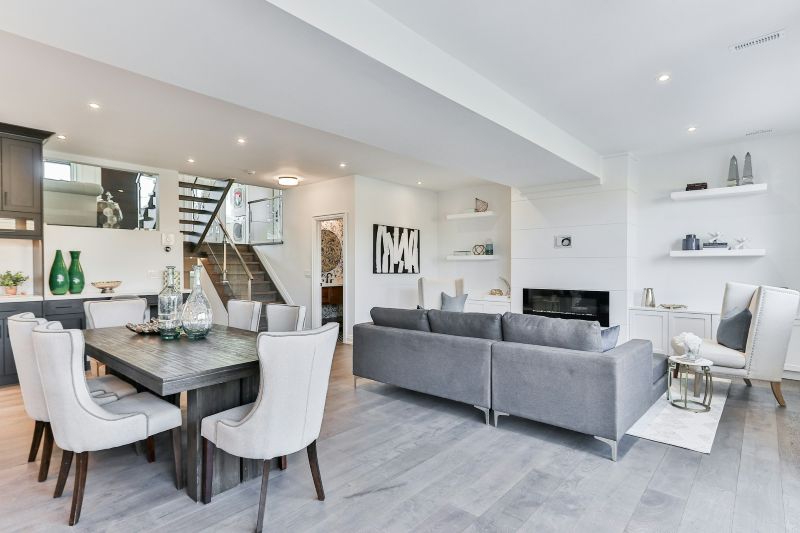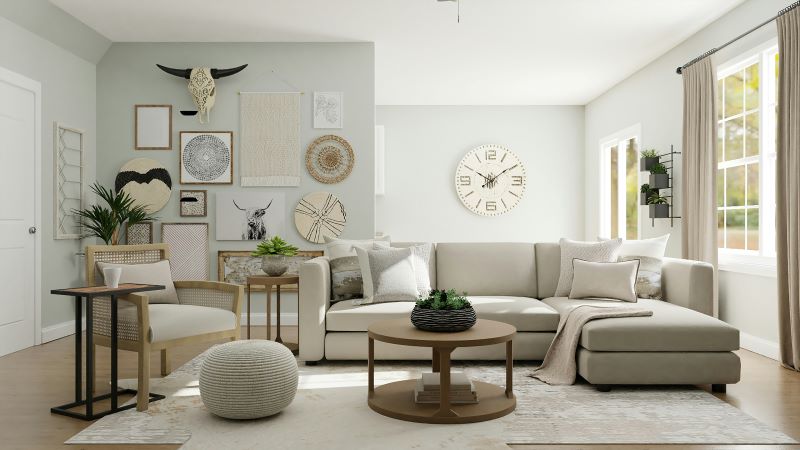Designing a home isn’t just about picking colors and furniture. It’s about creating a space that feels right for your life. The goal isn’t perfection—it’s comfort, ease, and a little personality in every corner. Your home should work for your lifestyle, meet your everyday needs, and still be something you’re proud to walk into. Think of it as building your personal haven: part practical, part beautiful. Whether you’re working from home, raising a family, or just need a cozy retreat, you can shape your space around how you live. Let’s explore how function and aesthetics can truly come together.
1. Know Your Lifestyle Before You Start
You can’t design a functional home without understanding how you live. Are you someone who loves to cook? You’ll need a kitchen that handles traffic and offers space to prep. Do you work remotely? That home office can’t just be an afterthought. Begin by taking stock of your daily routines. Think about the times you’ve felt frustrated at home—tight corners, not enough light, poor storage—and list them out. Then, consider what makes you feel most at ease. Designing for your lifestyle sets the foundation. It’s not about trends or Pinterest boards; it’s about creating a space that works for your real life.
2. Start with Flow, Not Furniture
When you step into your home, what path do you naturally follow? That’s where flow matters. A home with good flow feels open, comfortable, and intuitive. Don’t shove oversized furniture into a room just because it’s trendy. Instead, map out how you move through your space. Walkways should be wide enough. Doors shouldn’t open into crowded corners. And if you find yourself constantly adjusting or bumping into things, that’s a design red flag. Sometimes, strange sounds in your house—like your AC making noises—stem from airflow issues caused by poor layout decisions. Comfort goes beyond looks. It’s the way your home moves with you.
3. Define Zones Without Building Walls
Open concept living feels great until your life needs structure. That’s why defining zones is key. Use rugs, lighting, or even a change in paint color to mark different spaces—like a reading nook, a dining area, or a play corner—without needing to build walls. Room dividers and furniture placement can offer subtle boundaries too. These visual cues give your space function while keeping it breathable. You don’t want to feel boxed in, but you also don’t want a living area where everything blends into everything else. A smartly zoned home helps with organization, clarity, and peace of mind.
4. Think Storage as a Design Element
Storage isn’t just about tucking things away. It’s about creating intentional spots for everything you own, without cluttering the space. Think of storage as part of the room’s aesthetic. Floating shelves, built-in benches, and under-bed drawers can blend right into your decor. When you don’t have enough storage, things pile up quickly—and that’s where frustration starts. Choose dual-purpose furniture that hides clutter but still looks great. A beautiful home isn’t one where nothing is out; it’s one where everything has a place. Organized spaces feel calmer, more open, and way more enjoyable to live in day after day.
5. Let Natural Light Lead the Way
If there’s one free design tool you should always prioritize, it’s natural light. Light affects mood, color, and the way we experience space. Rearranging furniture to catch better daylight can instantly elevate a room. Don’t block your windows with heavy drapes or bulky pieces. Instead, embrace sheer curtains or pull furniture a bit away from light sources. Consider how sunlight moves through your home throughout the day and use mirrors to bounce it around. Homes that feel light-filled also feel bigger, more welcoming, and more alive. Let the sun set the tone, and your space will thank you.
6. Choose Colors That Support Function
Color influences how we feel, think, and behave in a space. When designing a home that supports function, color should do more than look good—it should serve a purpose. For example, soft blues or greens promote calm in bedrooms, while muted neutrals can make small spaces feel larger and less chaotic. In work zones, subtle yellows or off-whites can promote focus and mental clarity. Avoid bold, overstimulating tones in high-use areas unless you balance them carefully. Think about how each space makes you feel. The right color choices enhance a room’s function while contributing to its visual harmony.
7. Personalize with Meaningful Decor
Your home should tell your story. It’s not a showroom; it’s a reflection of your life, memories, and values. Surround yourself with items that have meaning—art you love, souvenirs from your travels, or photographs that make you smile. These personal touches make a space feel alive and rooted in identity. Avoid filling your shelves with trend-driven items just to fill space. Choose pieces that bring emotion or nostalgia. Even small things like a hand-me-down lamp or a book collection can ground your space in authenticity. Function thrives in homes that feel lived in, loved, and thoughtfully curated.
8. Pay Attention to Acoustics
Sound often gets overlooked in home design, but it plays a huge role in comfort. Hard surfaces like tile and glass create echoes, while soft materials—rugs, curtains, and upholstered furniture—absorb noise and soften the atmosphere. If you constantly feel unsettled in a room, it might be due to how sound bounces around. Design with acoustics in mind, especially in shared spaces. Also, stay alert to unusual noises. A buzzing outlet or a bathroom fan that hums too loudly might indicate a small problem before it becomes a big one. Addressing acoustic issues helps your home feel truly peaceful.
A home that works for you is one where function and beauty support each other. It’s not about mimicking magazine spreads or achieving flawless aesthetics. It’s about feeling good in your space, moving through it with ease, and being surrounded by things that make your life better. From improving traffic flow to managing light and sound, every detail matters. Trust your instincts, observe your habits, and build a space around what truly matters to you. Design becomes powerful when it reflects your needs, your taste, and your story—all working together to create something truly special.


